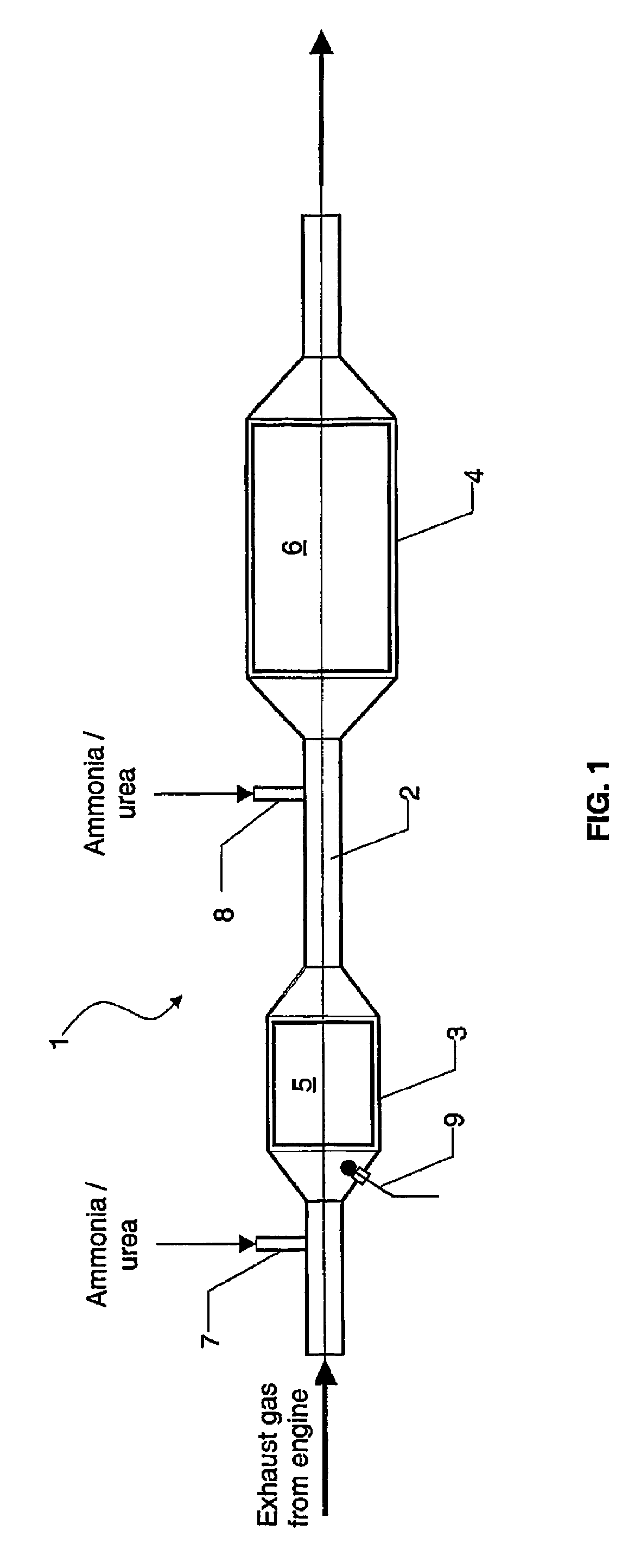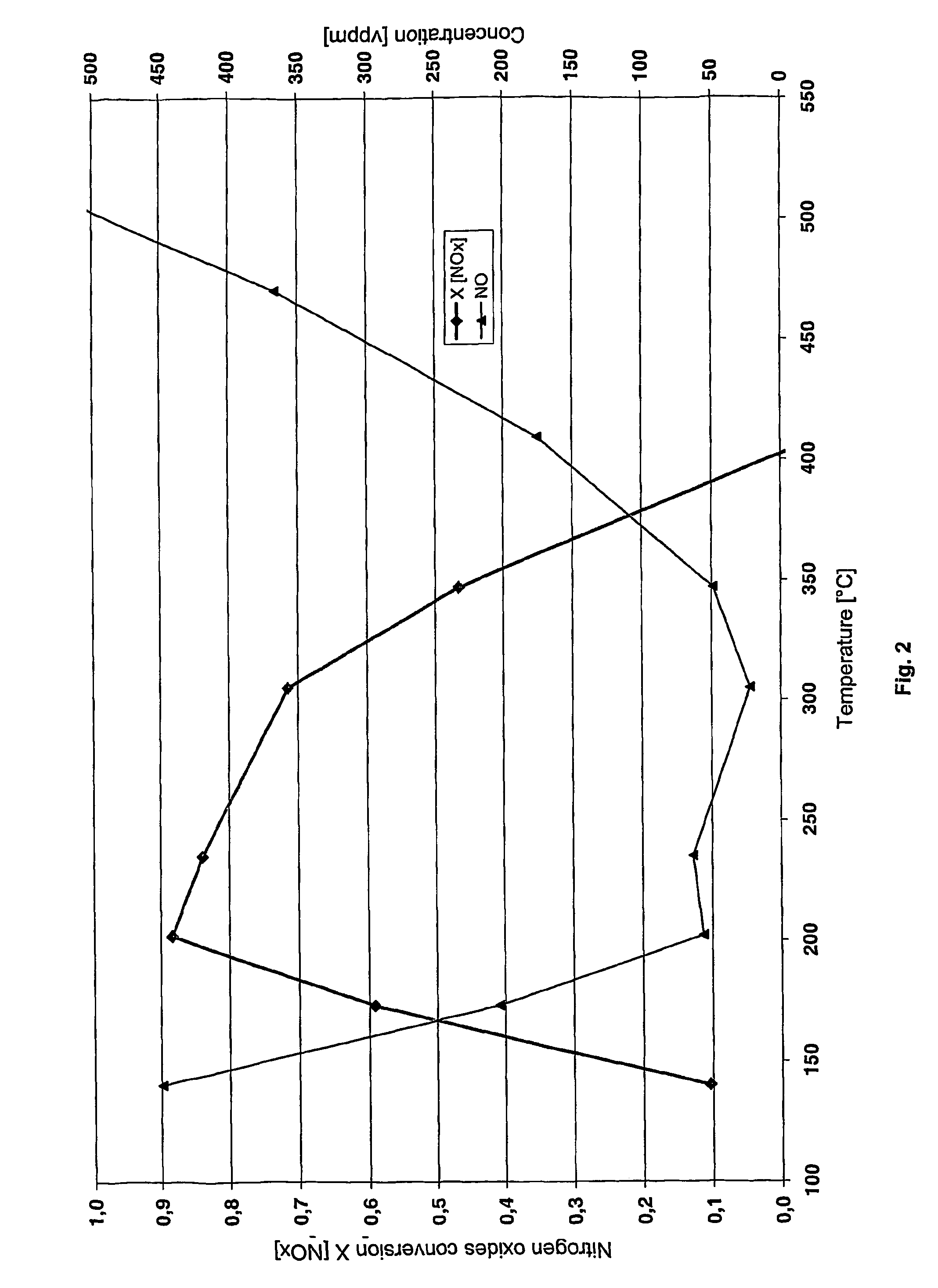Method of removing nitrogen oxides from the exhaust gas of a lean-burn internal combustion engine and exhaust-gas purification system therefor
a technology of internal combustion engine and nitrogen oxide, which is applied in the direction of exhaust treatment, engine components, mechanical equipment, etc., can solve the problems of affecting the efficiency of the selective catalytic reduction of platinum-containing catalysts, the range of operation of platinum-containing catalysts for selective catalytic reduction is limited towards high temperatures, and the emission of nitrogen oxides from lean-burn internal combustion engines. , to achieve the effect of simplifying the regeneration of the particulate filter
- Summary
- Abstract
- Description
- Claims
- Application Information
AI Technical Summary
Benefits of technology
Problems solved by technology
Method used
Image
Examples
example 1
[0049]This example also investigated the series connection of an oxidizing catalyst and an SCR catalyst. In this case, however, the ammonia needed for the selective catalytic reduction was added to the model gas mixture upstream of the oxidizing catalyst at temperatures below 250° C., and to the model gas mixture between the oxidizing catalyst and the SCR catalyst at exhaust-gas temperatures above 250° C.
[0050]FIG. 5 indicates the associated measuring plots. As shown, the method according to the invention can achieve a nitrogen oxides conversion rate of more than 80% for a very wide temperature range from 200° C. to above 500° C.
example 2
[0051]In order to demonstrate the active regeneration of a particulate filter by burning ammonia on the filter, a particulate filter made of silicon carbide and having dimensions of 143.76×152.4 mm and a cell density of 31 cm−2 (5.66″×61″, 200 cpsi) was provided with a catalytic coating which included platinum-activated cerium / zirconium oxide.
[0052]The platinum load of the filter was 5.3 l / g (150 g / ft3). The filter was preloaded with 20.1 g diesel soot and tested for its backpressure on a passenger car engine at various load and temperature stages using metered ammonia addition. It was found that at an exhaust-gas temperature between 350 and 400° C. with metered addition of urea solution at a concentration corresponding to approximately 750 ppm ammonia in the exhaust gas, the filter could be completely regenerated within 15 minutes.
PUM
 Login to View More
Login to View More Abstract
Description
Claims
Application Information
 Login to View More
Login to View More - R&D
- Intellectual Property
- Life Sciences
- Materials
- Tech Scout
- Unparalleled Data Quality
- Higher Quality Content
- 60% Fewer Hallucinations
Browse by: Latest US Patents, China's latest patents, Technical Efficacy Thesaurus, Application Domain, Technology Topic, Popular Technical Reports.
© 2025 PatSnap. All rights reserved.Legal|Privacy policy|Modern Slavery Act Transparency Statement|Sitemap|About US| Contact US: help@patsnap.com



